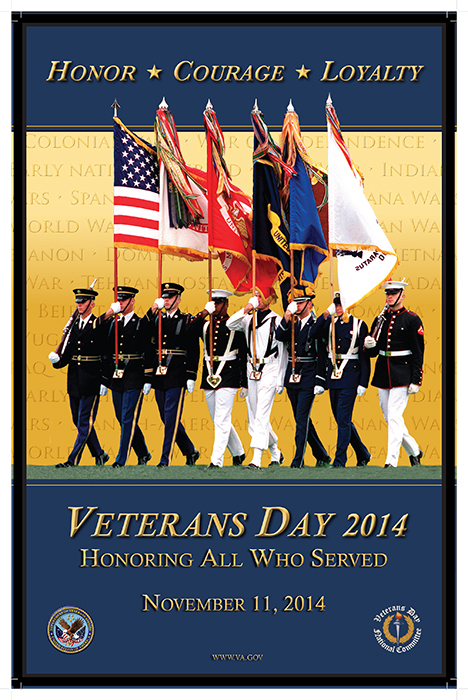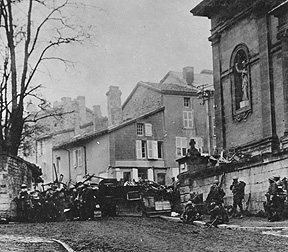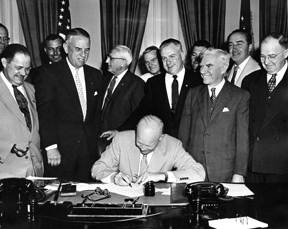During World War I, the armistice, or temporary cessation of hostilities, declared on the 11th hour of the 11th day of the 11th month in 1918, is regarded as the end of the “war to end all wars,” and is now commemorated with the celebration of Veteran’s Day each year on November 11. Britain, France, Australia, and Canada also commemorate the veterans of World Wars I and II on or near November 11th.
Even though “The Great War” officially ended on June 28,
1919, with the signing of the Treaty of
Versailles, the signing of the armistice
the previous November marked the end of the war in most people’s minds. In November 1919, President Woodrow Wilson proclaimed November
11, to be the first commemoration of Armistice
Day. His words were as follows: “To us in America, the reflections of
Armistice Day will be filled with solemn pride in the heroism of those who died
in the country’s service and with gratitude for the victory, both because of
the thing from which it has freed us and because of the opportunity it has
given America to show her sympathy with peace and justice in the councils of
the nations…” (www.va.gov)
The United States Congress officially recognized the end of
World War I and passed a resolution on
June 4, 1926, stating that the legislatures of twenty-seven of our States had
already declared November 11, to be a legal holiday and requested that the
President of the United States issue a proclamation
to display the flag of the United States on all Government buildings each November 11th and invite all people of the United States to
observe the day in schools, churches, and other suitable places with ceremonies
of friendly relations with all other peoples.
An Act approved May 13, 1938, made the 11th of
November in each year a legal holiday
dedicated to the cause of world peace and known as “Armistice Day.” Originally Armistice Day was a day honoring
veterans of World War I. After World War II required the greatest mobilization
of soldiers, sailors, Marines and airmen in the Nation’s history, and American forces
had fought in Korea, the 83rd Congress amended the Act of 1938 by
replacing the word “Armistice” with the word “Veterans,” and upon approval of
this legislation on June 1, 1954, Veterans
Day became a day to honor American veterans of all wars.
Under the Uniform
Holidays Bill passed by Congress in 1968, four national holidays
(Washington’s Birthday, Memorial Day, Veterans Day, and Columbus Day) were to
be celebrated on Mondays allowing federal employees to now have three-day
weekends for touring or travel. Veterans Day was now set as the fourth Monday
in October, the first under this law being October 25, 1971. Many states
continued to observe the holiday on its original date showing their disapproval
of the change which only caused confusion. Since the original date held historic and patriotic significance among many Americans, in 1978, President
Gerald R. Ford signed a new law moving Veterans Day back to November 11. If the
day November 11, is a Saturday or Sunday, the federal government observes the
holiday the previous Friday or following Monday, respectively.
Millions of Americans have fought since the beginning of the
Revolutionary War to obtain and maintain freedom
in our lives. We honor the veterans and their families today for their duty and
their sacrifice. Today on Veterans Day we remember and acknowledge all who have
served and are serving our country now. Through your service you have served
each and every American. God bless our troops,
both past and present for all that you have done.
Leave a comment about someone you know who has served our country and where they lived when they first enlisted.
Sources



























